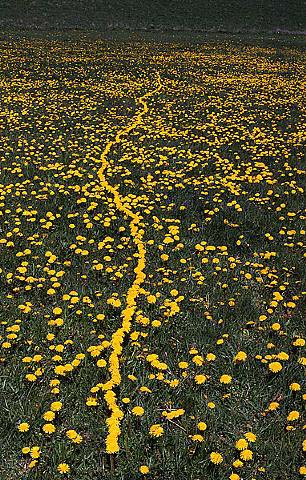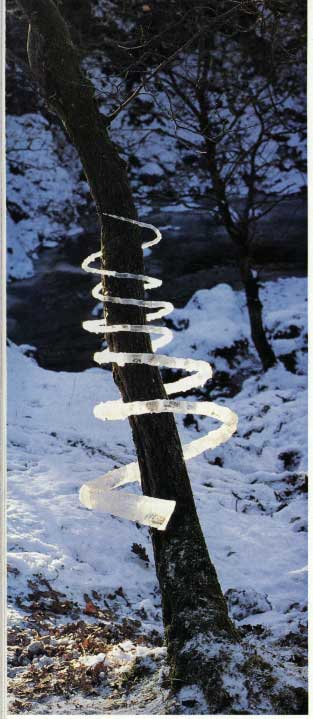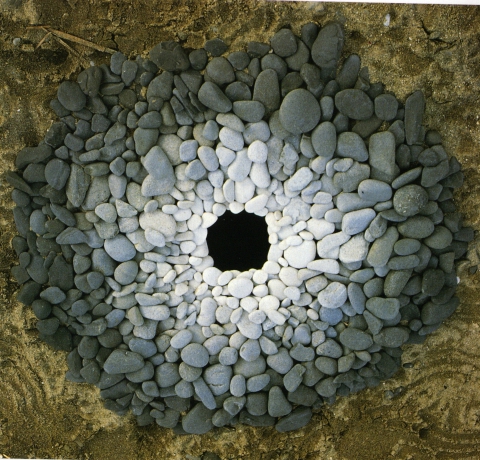I’ve just spent the last few days recovering from what must have been the most intense 12 days of my life.
A few months ago I realised that the Women’s Retreat, which happened the 14th – 21st September, didn’t have a facilitator or a site organiser, and so, in my tireless enthusiasm (it was the beginning of the season, after all) I volunteered myself. Cue, 2 months later, me realising just what I had let myself in for.
The epic mental journey started on the 7th September as I joined a team of Buddhafieldites to tat-down the massive Big Fat Buddha site at Frog Mill, in order to move our retreat head quarters onto our other piece of land at Broadhembury. I had to make sure that all the structures, cushions, blankets, pots, pans and rupas were stowed away in the right vans to get to Broad Hembury to set up the next retreat. I’d never taken on a leading role in this area so I arrived on site armed with a note book, which became my bible, and a pen, which I frequently lost. I also had Sean, who is our usual site co-ordinator/facilitator, who answered my every question with utmost patience and supported me amazingly. After 3 days of deconstruction, scratching my head and writing millions and millions of lists, at about 6pm on Sunday evening, we threw the last of the vegetables into a van, made a last neat tat pile against the hedge to come back for later, and stood in a circle, joined hands and transferred our merit. It is always an intense moment, leaving site. However long I have been there, whether it is just for the few days of a festival, the three weeks of Buddhafield Festival, or a site that I have come and gone from over a longer time, there is always something momentous about driving out of an empty field, with everything you need to create your home in the vans following you in convoy. It really brings home to me again and again the truth of impermanence and non-attachment, and then I forget it so easily, and have to remember that I know it. I feel as if, with Buddhism, I am constantly learning something, realising it a little bit, then falling back into old patterns, and then coming back to remembering what I’ve learnt, only each time it’s a little easier, feels a little more natural.
After one last night in the warmth and comfort of the van, we, a team of 5 women and 1 man, set off for Broadhembury, as usual, running late. The site is a beautiful boggy woodland, which, fortunately, or unfortunately depending on how you view it, hadn’t been visited or had any upkeep done, all summer. This meant that at the bottom of the main track we had to stop and 3 of our team had to cut back brambles and bracken so we could get the vans down there. Once parked up, we had to do more bramble fighting and grass wading to make our way into the main hearth area of the retreat site. I stood at the end of the board walk and couldn’t believe what I was seeing. The rain this summer, though bad for us, has been amazing for the land. The grass was lush and almost waist height in places, a big line of bracken has sprouted up, dividing the field, its wide, deep green, unmistakeable leaves providing some different textures from the yellowing ripening grass heads. The gravel paths which we spent so many hours digging, lining and filling in December were totally obscured by greenery, and I wasn’t sure if we would ever find them again. Ripe blackberries dangled from every plant, and even after just a few minutes of being on site my fingers were purple and my mouth full of dark sweetness. After a while of the team wandering around, re-introducing themselves to the land, we came back together and as it was starting to get dark, decided that all we could do would be to make a cup of tea and go to bed, to start early and freshly in the morning.
The next few days were a whirlwind of action. Each morning we would meditate, have breakfast outside round the hearth fire, check in, have a work meeting and then, after another few cups of tea, spring into action. Over the days the team grew until we were a group of 10 strong women (with Sean still helping for the first few days), each bringing something special to the group. We built a kitchen and tea tent, put domes up, cut grass back, built showers and shower cubicles and put the hot tub together without problems. Though I was running the site, and led the work meetings each morning, it always felt very much like we were all running it, we were all creating the space. In a very short time we felt like a community, and I knew I could rely on each of these women to do each thing to the best of her ability. The honesty within the group about what was going on for us personally, and the way in which those gifts of speech were received was awe inspiring, I have to say that I have never been on such a harmonious set up before. It was a nuturing space where we were able to take the time we needed to be in touch with ourselves, while also working really hard to do what we were there to do. Our morning meetings were long, full of laughter and joy, and yet also able to hold the sadness and grief that also came, which is an intrinsic part of our experience as living creatures.
By Friday lunch time we were all exhausted, and yet the retreat was only just about to begin! As some of us tended the hearth fire and put the kettle on, others trundled wheel barrows down to the car park to meet the new members of our community. I found myself helping people put their tents up, guiding them up and down the hill, pointing out the amazing sweet track, where I’d found the sweetest black berries, and of course, the all important question of where the toilet was. As it grew dark, we had our first meal as a full women’s community and headed off up to the shrine tent under the old grandmother oak at the top of the site, to welcome each other and perform the dedication ceremony.
We very quickly settled into an even rhythm, morning walking meditations from Vidyadasi, followed by an open sit, porriage for breakfast before a usually late work circle, through into a morning activity, lunch, free time, then another activity, then dinner, shrine and hot tubs and bed. Though I had volunteered to be both site manager and retreat facilitator, in the rush of the season, I hadn’t thought very much about the latter role, and shocked myself when I realised what I’d let myself in for. Speaking in front of groups, directing people I don’t know, being the person at the end of the chain of responsibility; these are all things I would not happily choose to do, I think I must have managed to blank out that those would be part of my role when I volunteered for it! I struggled a bit at the beginning, especially with calling the work circle and having to make the final decision on things, but by the end of the retreat I was really enjoying gathering people and holding the space, and I found a real sense of letting go of the doubts that I have about my abilities, and an incredibly deep sense of empowerment.
As a result of the powerful experience of setting up, combined with other recent happenings, I had my mitra ceremony on Wednesday night of the retreat. I first thought that I wanted to be a mitra when I was on the Young Women’s Retreat in January at Tara Loka, and since then I have been dancing round the idea, sometimes pushing it far away and thinking, ‘Never!!’ sometimes coming close to it and feeling into it. More recently with the end of the season I have had more time to connect with what I feel and where I want my life to go, and have been sitting with the thought of becoming a Mitra and making that commitment. I hadn’t come to a concrete decision yet, I had tentative plans to have it at the Team Retreat which is coming up next week, but when Mumukshu suggested that it would be good to have it during the retreat, something clicked and it felt like the right thing to do. Alix, another woman on the team also wanted to have hers then, so we combined our ceremonies, and it was the most intense amazing deepest joyful experience of my life.
Personally, my theme of the retreat, as well as the official one of ‘doorways to freedom’, was, in my mind, ‘keeping it silly and joyful’. I think it is very easy to be overly serious about the spiritual path, and to take yourself too seriously. In my experience bringing joy and laughter to everything you do, from meditation to work, can have a really profound effect. So, Alix and I agreed to have a fancy dress mitra ceremony. I must have sub-consciously been planning this or something as we’d brought two big bags of fancy dress clothes with us, and so over Wednesday women would disapear into the dome, we’d hear laughs and giggles and shouts of joy, and then smiling women would emerge, clutching piles of fabric bundled up, telling us they couldn’t wait to reveal the outrageous outfit they had decided upon.
Later that night, sitting at the front of the dome, right next to the shrine, I looked around and was filled with such pure joy I felt like water. It was so clear to me that I was doing the right thing, that this was the path I was meant to be on. As I looked round the dome I could see old friends, new friends and women I had hardly spoken to, all united, each full of joy and beauty. Each had thrown herself wholeheartedly into the community, into practising and learning, and I felt honoured to share my experience with them, and honoured that they shared their experiences with me. Part of me wishes that I could or would share more of my experience of this with you reading this, but at the same time, I know that no words are deep enough, no sentence that I could construct would really tell the reality of what I felt and thought during those few hours, and so I won’t try, I’ll just say, I have no words, it is something that has profoundly affected me in many way, most of which, I’m sure, I don’t know or haven’t seen yet.
After this pinnacle, the rest of the retreat seemed to flow as smoothly as water does downhill, one thing seamlessly blending into the next, meditation into work, into deepening friendships and trying to work through old ones. I felt full of a deep calmness, and like, to use the word again, joy was just bubbling through me. Before I could comprehend it, it was Friday again, and tents were being taken down, I had a last minute scramble to make sure everyone got to their trains and buses on time, hugs were given and a massive email list drawn up so we could all keep in touch. Our little community of heroines disbanded, and we dispersed, carrying stillness, simplicity and contentment in our hearts.
















